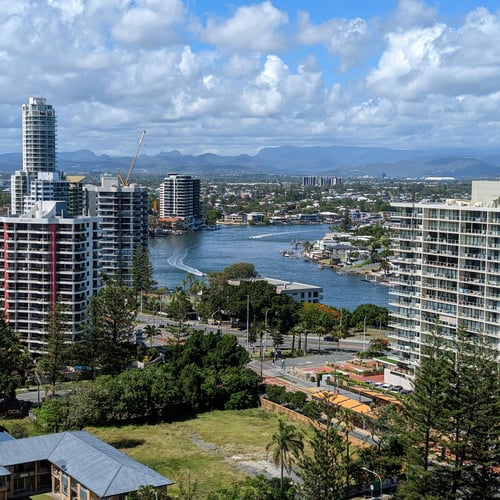Resources
Is High Turnover in an Apartment Block a Red Flag? A Buyer’s Guide to Reading the Signs

During a recent Property Clarity Call . A one-on-one session I offer for buyers and sellers seeking strategic guidance - a first-home buyer raised a brilliant question:
"I noticed several apartments have sold recently in the building I’m interested in. Is that a red flag?”
This is such a smart instinct to follow, especially for a first-time buyer. It sparked a great conversation, and I wanted to share part of my answer here, because many of you might be wondering the same thing.
Understanding Turnover: What's Normal?
In the Australian property market, turnover rates vary by property type, ownership style and location. According to CoreLogic, the average annual turnover rate for residential properties sits around 5.6%, but that doesn’t mean every block or suburb will follow the same rhythm.
In apartment complexes, especially those with 80–100+ units, movement is more frequent. People relocate, upgrade, downsize, or change investment strategies.
Context matters. A few things to consider:
• Size of the Complex:
If the building has 100 apartments and 9 have sold in 18 months, that’s only a 9% turnover , normal. But in a 20-unit block, 9 sales means nearly half the owners have moved on. That deserves a closer look.
• When were the apartments purchased?
Some complexes were bought off-the-plan in 2015–2018. Many of those fixed-rate loans are ending now, and investors may be offloading properties. That’s not a red flag, just a cycle.
• Market Conditions:
As of mid-2025, falling interest rates and rising consumer confidence have boosted turnover nationwide. Buyers are returning, and so are sellers (Reuters, June 2025).
What Could Be a Red Flag?
Not all turnover is created equal. Here are a few signs the building might need extra scrutiny:
1. High Turnover in a Small Complex
In buildings under 30 units, high sales activity often signals problems, financial stress, structural issues, or unhappy owners.
2. Clustered Sales
If multiple units are listed at once, especially in a short time frame, ask why. There could be defects, new levies, legal action, or planning changes nearby (e.g. a proposed development next door).
3. Investor Sell-Offs
Check listing history, if most properties were tenanted or marketed to “investors only,” it's possible there’s been a mass exodus due to poor rental yields, rising strata fees, or upcoming regulation changes.
4. Maintenance Red Flags
Cracks in common areas, lifts out of order, damp smells in corridors, they all hint at underlying (and costly) issues.
5. Legal or Financial Stress
Strata reports mentioning special levies, disputes, or non-compliant fire systems are warning signs. Many of these can result in sudden owner exits.
What Should You Do if You Spot High Turnover?
This is where savvy buyers gain an edge. Here’s how to investigate further:
✔ Ask the agent directly:
“Can you tell me why several owners have sold recently?”
Their answer might reveal upgrade cycles, investor exits, or upcoming strata changes, all of which give you leverage.
✔ Order a full strata report:
Have a conveyancer, lawyer or buyer’s agent review it carefully. You’re looking for signs of financial stress, upcoming levies, and building health.
✔ Look at recent sales trends:
Use Domain or realestate.com.au to view how prices have performed. Are they flat? Rising? Dropping?
✔ Check rental saturation:
If the building is 70% tenanted, you may face higher volatility in terms of noise, wear-and-tear, and investor-driven sales.
✔ Inspect carefully:
Don’t skip the lift lobby, parking garage, or stairwells. A well-maintained building shows pride of ownership, a good sign.
What to Look for by State
Different states give you access to different documents. Here’s what to start with:
NSW
- Full strata report (by-laws, sinking fund, past levies)
- Check for flammable cladding, fire compliance
VIC
- Section 32 (Vendor’s Statement)
- Owners Corp fees and insurance
- AGM minutes (get a full copy if possible)
QLD
- Body Corporate Disclosure Statement
- Sinking fund balance and past meeting minutes
- QBCC warranty status (if under 6 years old)
SA
- Form 1 Vendor Disclosure
- Strata or community title search
- Watch for unapproved alterations
WA
- Form 28 Strata Information Certificate
- Special levies, planned capital works
- Confirm if leasehold or freehold title
And more...
Takeaways
Not all turnover is bad. A high number of sales could reflect timing, not trouble - but in smaller blocks, it’s worth investigating.
Strata reports are your best friend. Use them to understand the financial and structural health of the building.
Use data to your advantage. If turnover is high and prices are flat, you may be able to negotiate more effectively.
Ask the right questions. A little discomfort asking direct questions now could save you thousands later.
Get professional advice. A buyer’s agent or property-savvy conveyancer can flag things you might miss.
Sources
- CoreLogic Australia – Market Turnover Trends
- Reuters – Australian Property Market Recovery, 2025
- The Strata Collective – What to Look For in a Strata Report
Article FAQs
You might also be interested in
The Real Cost of Buying Without Representation: Why Going It Alone Can Cost You More

Going solo on your next property purchase can cost you $335K–$565K+ in hidden traps: poor choices, missed off-markets, fatigue, legal surprises and emotional overspend. This guide breaks down each risk.
The 5-Step Readiness Check for Serious Property Buyers: Are You Really Ready to Act?

Buying property demands more than pre-approval. JORÍS Advisory’s five-step readiness check guides you through full financial planning, emotional preparedness, rapid decision-making, stakeholder alignment and trusting your instincts.
How a Strategic Buyer’s Agent Saves You Time, Stress & Money

Buying property solo can consume 400+ hours, risk costly missteps and emotional overpaying. A strategic BA from restores that time, provides off-market access and negotiation expertise, and secures superior asset performance, saving you tens of thousands and delivering confidence every step of the way.